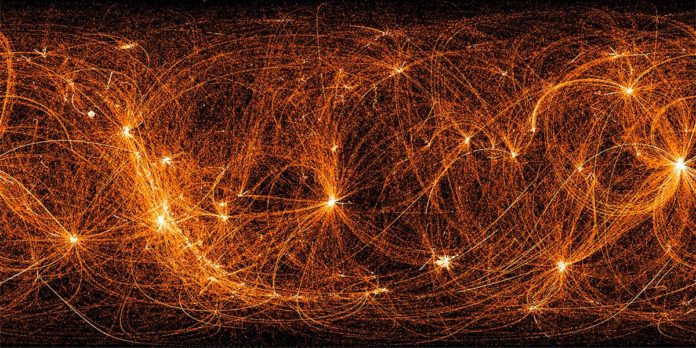Recently, NASA has shared a stunning image of the entire sky in X-rays captured by NICER, a NASA Explorers program Mission of Opportunity dedicated to the study of the extraordinary gravitational, electromagnetic, and nuclear physics environments embodied by neutron stars, exploring the exotic states of matter where density and pressure are higher than in atomic nuclei. The image shows a stunning map of bright sweeping arcs.
The map originally features the data from the first 22 months of NICER’s science operations. Every single arc detects X-rays and occasional strikes from energetic particles, captured during NICER’s night moves.
The bright spots in the map represent the region where NICER has spent looking in that direction. A diffuse glow permeates the X-ray sky even far from bright sources.
The prominent arcs are the result of the same path often followed by NICER between targets. The arcs intersect on bright spots representing NICER’s most popular destinations — the locations of important X-ray sources the mission regularly monitors.
Keith Gendreau, the mission’s principal investigator at NASA’s Goddard Space Flight Center in Greenbelt, Maryland said, “Even with minimal processing, this image reveals the Cygnus Loop, a supernova remnant about 90 light-years across and thought to be 5,000 to 8,000 years old. We’re gradually building up a new X-ray image of the whole sky, and it’s possible NICER’s nighttime sweeps will uncover previously unknown sources.”
NICER, an International Space Station payload, is required to track cosmic sources whenever the Space Station orbits our planet every 93 minutes. However, when the sun sets and it’s nighttime at the Space Station, the NICER team maintains active detectors while the payload slides between targets, which could happen up to eight times each orbit. With the map, NASA could eventually discover new space sources and better navigate the solar system.
With these measurements, physicists can explore what form of matter exists in the cores of these neutron stars, which could also be seen as pulsars. Pulsars, also known as rapidly-spinning neutron stars, are part of NICER’s regular targets and could further aid this research. Pulsars are also analyzed in NICER’s Station Explorer for X-ray Timing and Navigation Technology (SEXTANT) experiment, a “galactic GPS system” that might enable spacecraft to efficiently travel through the solar system in the future.
